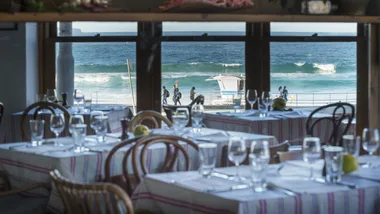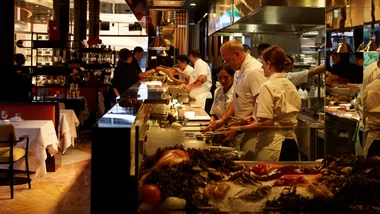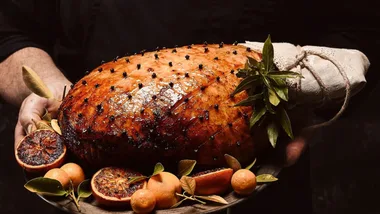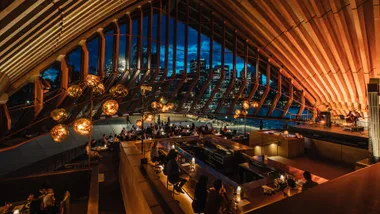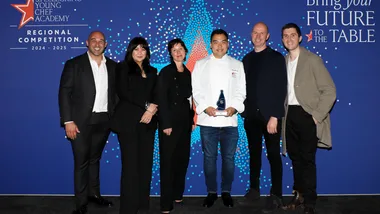Igor and Ludmilla Ivanovic’s sourdough starter was born in Boston. They brought it with them when they came to open a bakery in Sydney in 2008. A decade later it’s a product of its place, populated by local yeasts and bacteria from the Bronte air, and from the hands of the people who work it every morning. “It’s not about how old it is,” says Igor, “it’s about how you’re managing it.”

Iggy’s Bread owners Ludmilla and Igor Ivanovic.

Iggy’s makes bread, but really it starts with people. Milos, a former electrician from Belgrade, for example, has worked here for five years; Linda, a trained pastry chef from Indonesia, has been here seven.
Baker Milos Misic.

Bakers Linda and Alberto Dal Bosco.

The rest is an obsession with detail: stringently filtered water, stone-ground and roller-ground flour from Wholegrain Milling, mineral-rich Himalayan salt. These ingredients are mixed with a portion of the starter to form the dough, which is packed into tubs and left to prove, the times scribbled onto the side of stainless steel equipment.
Baker Tolga Das.

“Wet dough, they call it the crazy dough,” says Igor. “For me, dry bread is lacking life, it’s not inspiring to eat.” Iggy’s loaves are 70 per cent water, but there’s imagining a wet dough, and there’s seeing it slip out of the tubs and flop right into a Japanese-made dough divider. It’s a precise machine, cutting the dough to within a gram or two of 850 grams for the country loaf, and treating it in a such a way that the bakers can handle it immediately.

As the portions are cut, the team surrounds the conveyor, and dusts and shapes the dough, pulling and folding it under itself to build strength and tension. The loaves are transferred to boards, the boards to trolleys, and the trolleys to enormous proofing cabinets that incrementally increase the temperature from two degrees to 21 degrees over 15 hours.
Baker Jonas Barros.

Igor Ivanovic.

Baker Linda.

Loaves of bread waiting to be proofed.

A long proofing means a couple of things; the bakers can sleep longer, and it also slows down the fermentation, allowing the dough to develop complex floral notes. As the loaves come out of the cabinets they’re dusted with flour, scored with a razor, and loaded into the ovens by machine. Igor calls it a deboarder, which gets the dough from A to B with next to no handling, crucial with such a soft dough. The country sourdough, the standard loaf, gets 36 minutes in a 280°C thermal oil, stone-floored, steam-injecting deck oven. The finished loaves circulate the room on a conveyor and slip down a steel ramp to be packed into trays. Iggy’s bakes all its bread – loaves in different shapes and sizes, sourdough bagels, rolls – in about a two-hour window.

Freshly baked bagels.

.

.

As the dust settles and the sun rises, Iggy’s sourdough starts to line the shelves at the shop entrance. Locals come for their daily loaves, and the rest are served on menus around Sydney, at restaurants including Bistro Guillaume, Monopole, and Three Blue Ducks just a couple of doors down. Iggy’s breads are dark and crusty, with a loose, succulent crumb, and long flavour. The best bread in Australia? Maybe. But it’s as much about the process as it is the result.

Iggy’s signature sourdough loaves.

.

Iggy’s shopfront.

.

“The mission that we practise here is to make the best bread we can, and sell it at the cheapest price that we can,” says Ludmilla. “We’re trying to remove the ego around what we’re doing, you know, we’re just making bread. It’s been made for thousands of years – Aboriginal people used to make bread – and it’s an honour and a privilege to be making it.”

.
